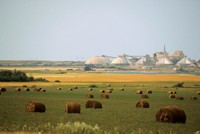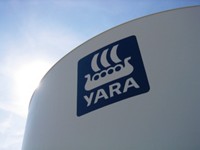Advertisement
Grab your lab coat. Let's get started
Welcome!
Welcome!
Create an account below to get 6 C&EN articles per month, receive newsletters and more - all free.
It seems this is your first time logging in online. Please enter the following information to continue.
As an ACS member you automatically get access to this site. All we need is few more details to create your reading experience.
Not you? Sign in with a different account.
Not you? Sign in with a different account.
ERROR 1
ERROR 1
ERROR 2
ERROR 2
ERROR 2
ERROR 2
ERROR 2
Password and Confirm password must match.
If you have an ACS member number, please enter it here so we can link this account to your membership. (optional)
ERROR 2
ACS values your privacy. By submitting your information, you are gaining access to C&EN and subscribing to our weekly newsletter. We use the information you provide to make your reading experience better, and we will never sell your data to third party members.
Investment
Nutrien shelves low-carbon ammonia project
Company plans to control costs amid nitrogen fertilizer market volatility
by Alexander H. Tullo
August 3, 2023

Citing volatility in fertilizer markets, Nutrien has decided to suspend work on a low-carbon ammonia project planned for its complex in Geismar, Louisiana.
In the Canadian company’s Aug. 2 earnings statement, CEO Ken Seitz says the move is meant to “reduce our controllable costs.” The cost of building the plant has increased from initial estimates, the company says. Nutrien also points to uncertainty around the timing of demand for low-carbon ammonia, which is intended to be exported for use as a fuel, primarily in East Asia.
When Nutrien announced it was studying the project in May 2022, it estimated the cost at $2 billion. It planned an ammonia plant with 1.2 million metric tons (t) of annual capacity. An autothermal reformer was to produce hydrogen raw material from natural gas, and the firm would recover the by-product carbon dioxide. Overall, Nutrien aimed to recover 90% of the CO2 emissions from ammonia production.
Denbury Carbon Solutions signed an agreement to sequester the 1.8 million t of CO2 emissions annually. Mitsubishi intended to buy 40% of the ammonia output.
But nitrogen fertilizer prices have been falling, after peaking in mid-2022. Costs for natural gas, the main input for ammonia production, have been declining, particularly in Europe, where they reached crisis levels last year. Additionally, a lot of new capacity has hit the market recently, and farmers have eased up on fertilizer purchases.
According to the Dutch fertilizer maker OCI Global, US benchmark prices for ammonia averaged $369 per metric ton during the second quarter. This is a 71% decline from the same quarter last year and a 50% drop from the first quarter.
OCI’s sales declined 52% from the second quarter of 2022. The firm generated a loss of about $90 million after earning nearly $500 million in the same quarter last year.
The Norwegian nitrogen fertilizer producer Yara posted a $300 million loss for the quarter after earning about $670 million last year.
CF Industries fared better during the quarter. The US firm managed to avoid a loss, but earnings fell 55% on a 48% decline in sales.
Nutrien, which is active in the potash, phosphate, and retail fertilizer businesses in addition to nitrogen, reported a 20% decline in sales and an 88% drop in earnings.
Fertilizer makers are seeing signs of improvement. Fertilizer application for the North American planting season was strong, and prices for urea and other nitrogen fertilizers started inching up again toward the end of the second quarter.
In a recent conference call with analysts, Yara CEO Svein Tore Holsether said he thinks business is starting to turn around.
“We are in 2023 at the peak of capacity additions, with limited new capacity coming on stream in 2024 and onwards,” Holsether said. “So together with the recent urea price developments and strong farmer incentives, this indicates a tighter nitrogen market outlook.”





Join the conversation
Contact the reporter
Submit a Letter to the Editor for publication
Engage with us on Twitter